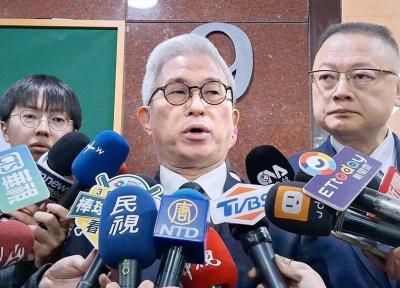The second satellite constellation jointly developed by Taiwan and the US — Formosat-7/COSMIC-2 — is ready to be transported to the US for its launch, National Space Organization (NSPO) Director-General Lin Chun-liang (林俊良) said yesterday.
Once the US gives the green light, the NSPO would start the process to transport the constellation of six weather satellites, Lin said.
Formosat-7 would be launched by US firm Space X from Kennedy Space Center in Florida on the company’s newest rocket, the Falcon Heavy.
It is third in line in the company’s rocket launch schedule this year, according to the NSPO.
The timetable for Formosat-7’s transportation and launch remains uncertain, but based on contractual terms, the US would give the green light to transport the satellite 60 days ahead of its scheduled launch, Lin said.
US personnel late last month visited Taiwan to verify the constellation’s technical details for the final time, he said.
Preparations are under way for the Falcon Heavy’s first commercial launch, scheduled for sometime next month at the earliest, and the results of that launch would affect the timing of subsequent launches, the agency said.
The constellation is to replace Formosat-3, the product of the first space collaboration between Taiwan and the US, with state-of-the-art instruments and equipment to collect meteorological and climate data, it said.
Jointly developed by the NSPO and the US National Oceanic and Atmospheric Administration, the new satellite constellation would be deployed in a low inclination orbit to collect low and mid-latitude ionospheric data.
Each satellite is equipped with three US-built payloads, including a radio occultation receiver that can receive US Global Positioning System and Russian Global Navigation Satellite System signals, the NSPO said.
The data would be transmitted to a ground station and processed into atmospheric and ionospheric weather indicators, such as temperature, pressure, water vapor content and electron density, it said.
The other two payloads are an ion velocity meter, which directly measures the temperature, velocity and incidence angle of ions in the path of each Formosat-7 satellite, and a radio frequency beacon, which measures irregularities in electron densities in the ionosphere.
Formosat-7 would generate double the volume of data generated by Formosat-3 and greatly increase the amount of low-latitude atmospheric and ionospheric data, the agency has said.
The data would be incorporated into the Central Weather Bureau data and forecast system to help improve the accuracy of weather forecasts and climate observation, it said.
In addition to the six satellites, the constellation also includes the Taiwan-built Formosat-7R satellite, dubbed the “wind hunter” by the NSPO.

Taiwan is to commence mass production of the Tien Kung (天弓, “Sky Bow”) III, IV and V missiles by the second quarter of this year if the legislature approves the government’s NT$1.25 trillion (US$39.78 billion) special defense budget, an official said yesterday. Commenting on condition of anonymity, a defense official with knowledge of the matter said that the advanced systems are expected to provide crucial capabilities against ballistic and cruise missiles for the proposed “T-Dome,” an advanced, multi-layered air defense network. The Tien Kung III is an air defense missile with a maximum interception altitude of 35km. The Tien Kung IV and V

The disruption of 941 flights in and out of Taiwan due to China’s large-scale military exercises was no accident, but rather the result of a “quasi-blockade” used to simulate creating the air and sea routes needed for an amphibious landing, a military expert said. The disruptions occurred on Tuesday and lasted about 10 hours as China conducted live-fire drills in the Taiwan Strait. The Civil Aviation Administration (CAA) said the exercises affected 857 international flights and 84 domestic flights, affecting more than 100,000 travelers. Su Tzu-yun (蘇紫雲), a research fellow at the government-sponsored Institute for National Defense and Security Research, said the air

A strong continental cold air mass is to bring pollutants to Taiwan from tomorrow, the Ministry of Environment said today, as it issued an “orange” air quality alert for most of the country. All of Taiwan except for Hualien and Taitung counties is to be under an “orange” air quality alert tomorrow, indicating air quality that is unhealthy for sensitive groups. In China, areas from Shandong to Shanghai have been enveloped in haze since Saturday, the ministry said in a news release. Yesterday, hourly concentrations of PM2.5 in these areas ranged from 65 to 160 micrograms per cubic meter (mg/m³), and pollutants were

Taiwan’s armed forces have established response protocols for a wide range of sudden contingencies, including the “Wan Chun Plan” to protect the head of state, the Ministry of Defense (MND) said today. After US President Donald Trump on Saturday launched a series of airstrikes in Venezuela and kidnapped Venezuelan President Nicolas Maduro, concerns have been raised as to whether China would launch a similar “decapitation strike” on Taiwan. The armed forces regularly coordinate with relevant agencies and practice drills to ensure preparedness for a wide range of scenarios, Vice Minister of National Defense Hsu Szu-chien (徐斯儉) told reporters before a